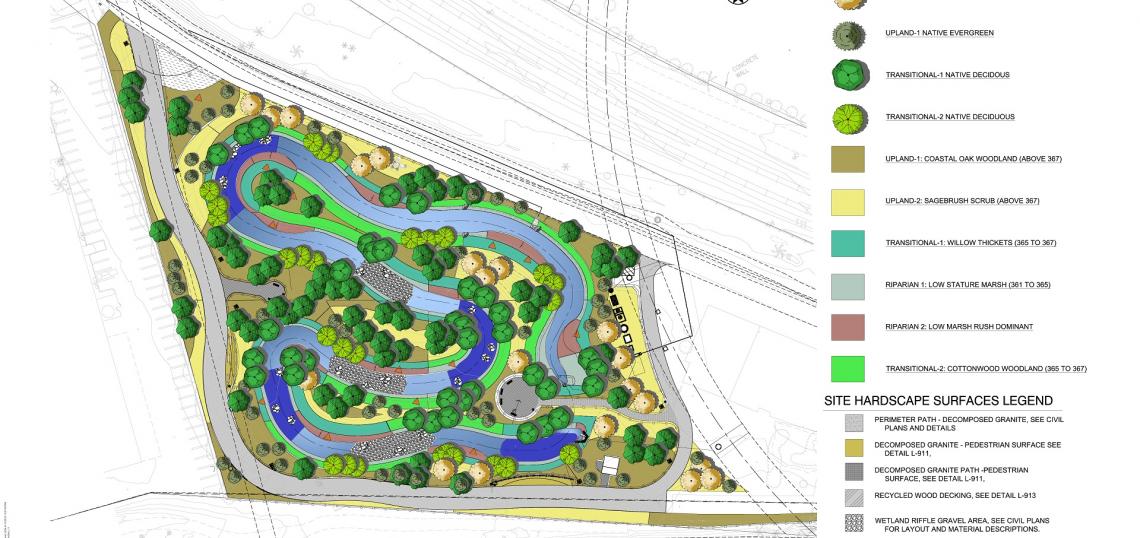A brownfield site along the banks of the L.A. River in Glassell Park is one step closer to being activated as public green space, according to an initial study published this month by the California Department of Parks and Recreation.
The Bowtie Parcel, a roughly 18-acre stretch of land located just south of the Glendale Freeway, was once a parcel of the Southern Pacific Railroad's bustling Taylor Yard facility, which shuttered in the late 1980s. After sitting fallow for years, the land was acquired by California State Parks in 2003.
Plans to reactivate the site, according to the new environmental study, come with the goals of enhancing native habitat, improving water quality, and increasing public access to the adjacent L.A. River. Likewise, the project would help to remove toxins and other pollutants from a site which has a long legacy of industrial uses.
The proposed Wetlands Demonstration Project, according to the initial study, would impact the northern 3.2 acres of the property, which abuts the Glendale Narrows. Various components of the effort would include:
- A constructed wetland to provide treatment for all flows less than 5 cubic feet per second The wetland would provide treatment and storage to sustain habitat and is sized to hold and retain 129,800 cubic feet of surface water and contain an additional 20,000 cubic feet of water storage in the pore space between rocks located in the wetland;
- Excavation and offsite disposal to address hazardous substances from rail operations described in the Removal Action Workplan;
- Diversion from an existing 11-foot by 11-foot Los Angeles County owned storm drain;
- A pump station to bring dry-weather flow and stormwater to the treatment system;
- A stormwater treatment system comprised of hydrodynamic separators and a filter to remove solids and other constituents of concern from diverted dry-weather flow and stormwater. A Hydrodynamic separator utilizes the velocity of the water and swirl separation to remove debris and large sediments from the incoming stormwater. The filter utilizes media to separate smaller sediments from the water. The combination of these two treatment technologies will limit the amount of debris and sediment entering the wetland providing improved water quality;
- A discharge pipeline and an overflow structure to control water into and out of the wetland and to control the water level;
- Stormwater and low-flow would be diverted from the existing County of Los Angeles storm drain via gravity into a below-grade treatment system and pump station. The pump station would pump the water into the wetland. The water would travel through the wetland for further treatment and discharge via gravity into the storm drain and ultimately into the Los Angeles River. A portion of the water will be utilized for irrigation of native vegetation and to support fauna. The remainder will be discharged at a much higher water quality into the Los Angeles River; and
- Habitat enhancement that involves the planting of native plants and other habitat features and enhancement measures throughout the Project’s upland, riparian, and wetland areas.
A site plan for the wetland area shows a meandering water surface area stretching across most of the site, which would be bisected and surrounded by a network of pedestrian paths and wood decking. Plans also call for native landscaping and new trees.
Construction of the wetland demonstration project, which does not have an announced timeline, is expected to occur over an approximately 13-month period.
The wetland area would represent a down payment of sorts on a broader campaign to turn the entire former footprint of the Taylor Yard into public open space - an effort branded as the 100 Acre Partnership. The City of Los Angeles helped facilitate the plan by acquiring a 42-acre segment of the site in 2017, and has since began planning to reimagine the space as a park. Those elements will eventually be connected by a new one-mile greenway planned along the bank of the river.
Follow us on social media:
- Glassell Park (Urbanize LA)







